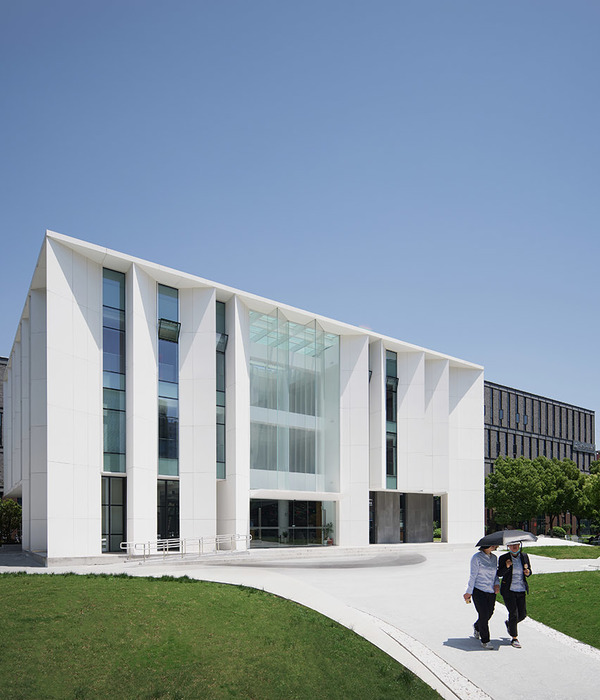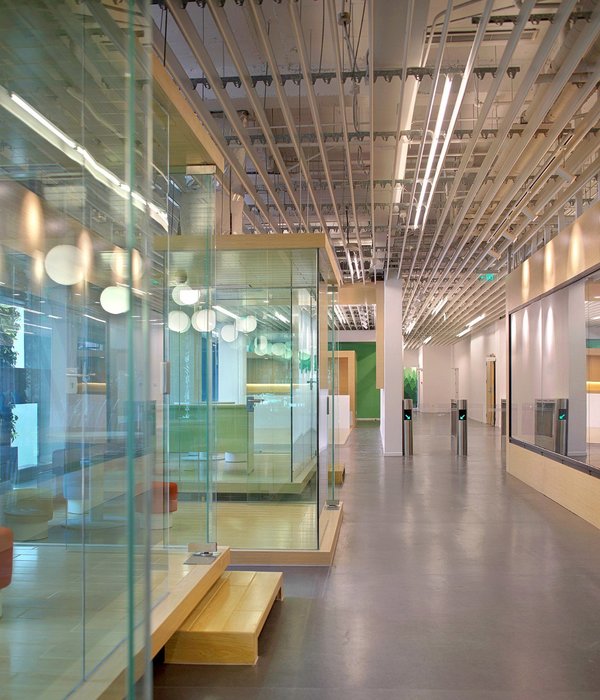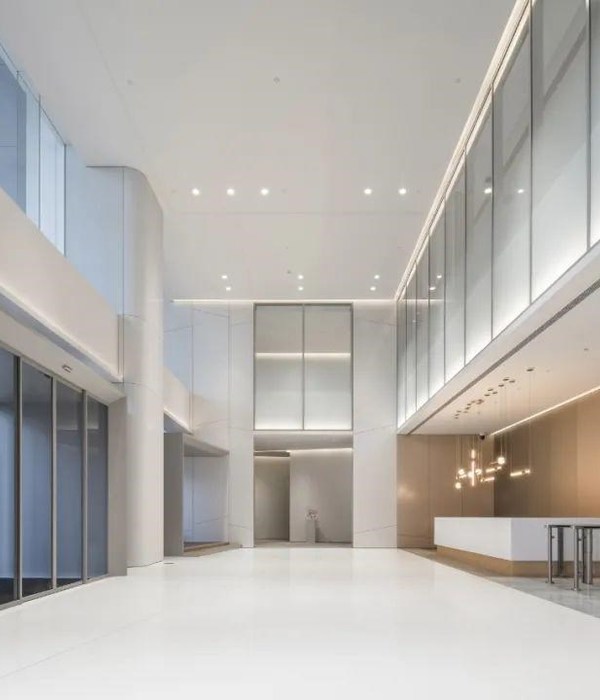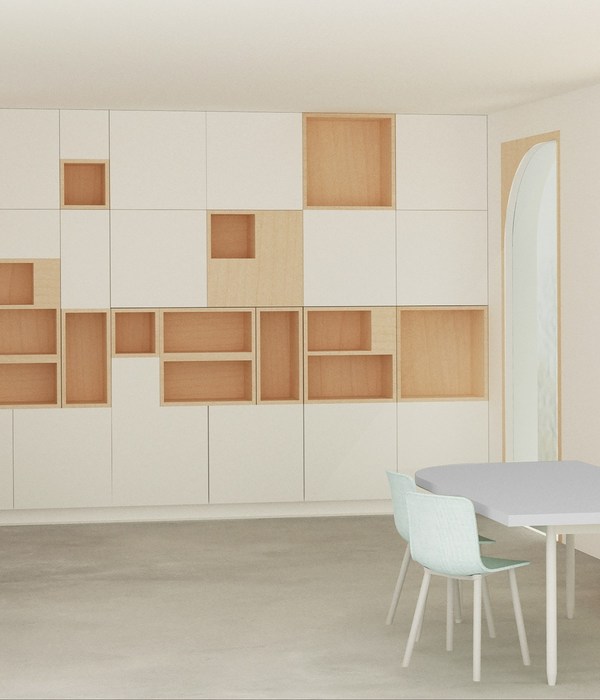The project is an extension to an existing historic house located in the village of
, at the edge of the historic cape that characterizes the village. The house was built in the early 20th century with local white limestone, surrounded by a fruit orchard and an upper agricultural terrace with unobstructed views to the coastal landscape. Hamat House is about highlighting traditional domestic architecture through a new addition. This traditional architecture took its logic and form from the constraints of building with stone: four cross vaults at the ground level create a big square base with vertical windows and doors that the stone lintels allow. The first floor with load-bearing stone walls and a concrete slab above, again with vertical windows and stone lintels.
The new addition expresses an architecture of choice constrained by the building materials- by mirroring the traditional construction with an abstract white cube, wrapped with a monolithic skin, cladded with the same white stone as the original house, but with vertical stone pieces. Positioned unilaterally across the skin, the vertical lining also coincides with glass openings, allowing the cube to look as if torn to allow light in through its skin. Such instances are deployed at the main staircase, at the kitchen’s corner, and within the master bedroom space, allowing for controlled visibility and natural daylight. The vertical cladding system gives cohesion between the parts and the whole, creating a striated surface for the monolith that has differentiated relations to interior spaces under a unified tectonic system.
The program is intended as a minor extension, adding a kitchen and dependencies on the ground floor, a master bedroom on the first floor, and connecting the separate levels with an interior vertical circulation to reveal and strengthen the architectural qualities of the existing house, which were mostly hidden. The creation of a 2-storeys’ height glazed circulation between the existing and the new generates, on one hand, a spatial articulation that inundates the interstitial space with light and, on the other hand, a renewed relationship to the outdoors, reason of well-oriented openings. The stone wall of the original house was partially removed at the ground level, revealing a contrasting continuity between the vaulted intimate living of the original house and the glazed double-height circulation space.
The intervention in the garden was as minimal as possible, retaining most of the existing fruit and olive trees. The existing agricultural terrace was reconceived as a pool area, and its stone wall was repurposed to become the pool edge and base for an adjoining terrace and pool house. This architecture, although abstracting the general rational form of the existing - cube, contrasts with its constructive method-shaped architecture by suggesting a playful object, as if to say that today, construction materials follow the project and not the other way around. Posing such an object next to the old one seems to create a sort of dialogue with the existing one and expresses the possibilities of contemporary construction.
{{item.text_origin}}












